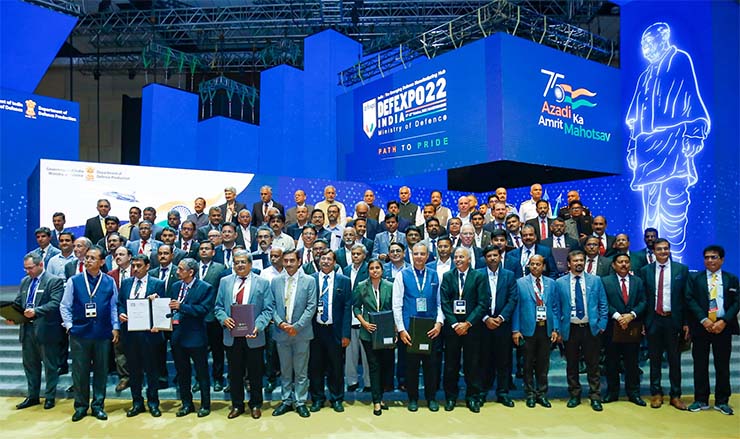
The 12th DefExpo at Gandhinagar, Gujarat finally came to an end on October 20, 2022, with 451 Memorandum of Understanding, Transfer of Technology agreements and product launches being signed.
These included 345 MoUs, 42 Major Announcements, 46 Product Launches and 18 ToTs at an investment of Rs 1.5 lakh crore. Indian Air Force and Hindustan Aeronautics Limited concluded a contract for 70 HTT-40 indigenous trainer aircraft worth Rs 6,800 crore.
Commenting on the overall success of the event Defence Minister Rajnath Singh termed it as the beginning of a new era of self-reliance, in which a strong and prosperous ‘New India’ is fully ready to stand shoulder-to-shoulder with major world powers. According to him, the 12th DefExpo has written a new chapter for the growth and prowess of the Indian defence sector. The grand success of the event is proof that India is well on course to become a global defence manufacturing hub in the times to come, he said.
According to the Defence Minister India is fast emerging as a hub of manufacturing in the defence and aerospace sector and India’s stature has grown on the world stage in the last few years due to the visionary leadership of Prime Minister Narendra Modi and policies like ‘Aatmanirbharta’ in defence as well as ‘Make in India, Made for World’.
He reiterated the government’s commitment to promoting the growth of the public and private sectors to achieve self-reliance in defence and hoped that the DefExpo open the floodgates for many more collaborations in new and unexplored areas and transform India into a leading defence manufacturer and exporter.
A remarkable development on the sidelines of the DefExpo 2022, was the visit by US-based Boeing Company representatives to India and their meeting with Indian Air Force and Navy officials to explore ways to optimise IAF and Navy fleets. These meetings were particularly important considering the ongoing Ukraine-Russia war due to which countries across the globe are looking to optimise their air force fleet. Because of the ongoing war in Ukraine, a lot of countries around Ukraine want to make sure that their fleets are not just ready but fully mission-capable in case there are issues that they need to look at.
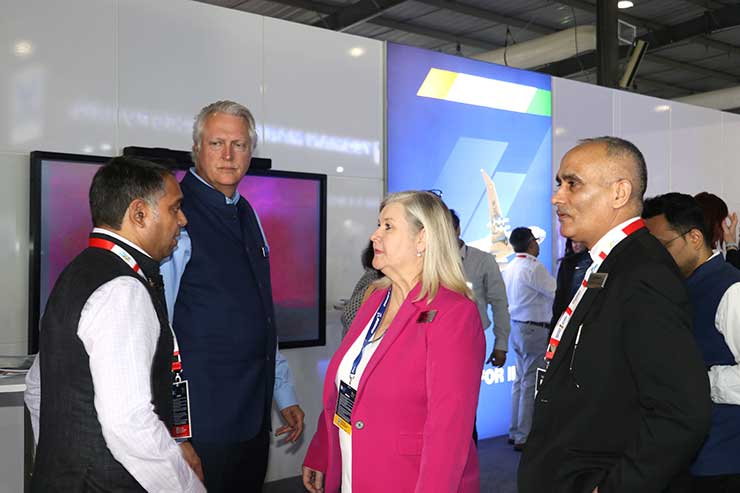
Boeing has been talking about digital and aerospace for a long time. One of the big developments that is in play already is how an aircraft is designed, how it is built, how it is supported, and how the people are trained.
Not to be left behind Rolls-Royce displayed its future-ready technology at the DefExpo 2022 and reiterated its commitment to support India’s vision of self-reliance in defence, through collaboration to co-design, co-develop and co-produce fighter jet engines in India and also propel defence exports. With more than 16,000 military engines in service in 103 countries, Rolls-Royce is a powerful player in the defence aerospace engine market. Rolls-Royce’s cutting-edge solutions displayed at the DefExpo included MT30 – the world’s most power-dense marine gas turbine in service today with destroyers, frigates and aircraft carriers. MT30 offers a superior power-to-weight ratio, generating up to 40MW from a 30-tonne packaged unit, and offers ship designers much more options and flexibility in designing the naval vessels of tomorrow.
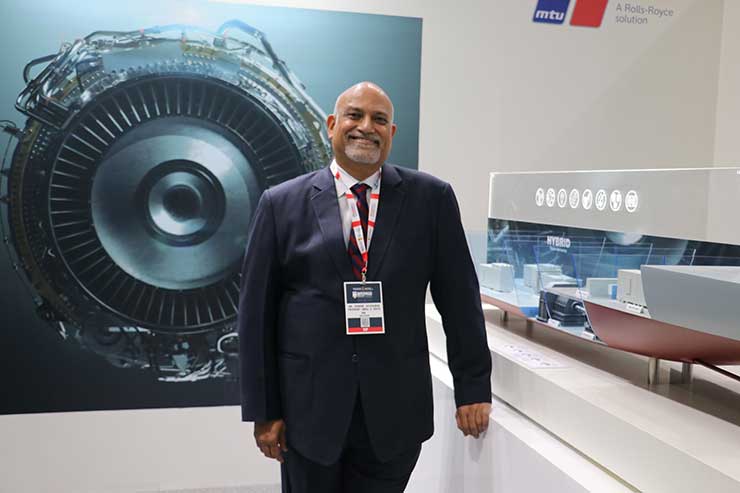
Rolls-Royce has been serving the Indian armed forces with advanced technology products and solutions to power land, naval and air defence capabilities over the past nine decades. The company has expanded its footprint in India with a robust ecosystem comprising supply chain, manufacturing, research and development, digital, service delivery and high-skilled engineering capabilities.
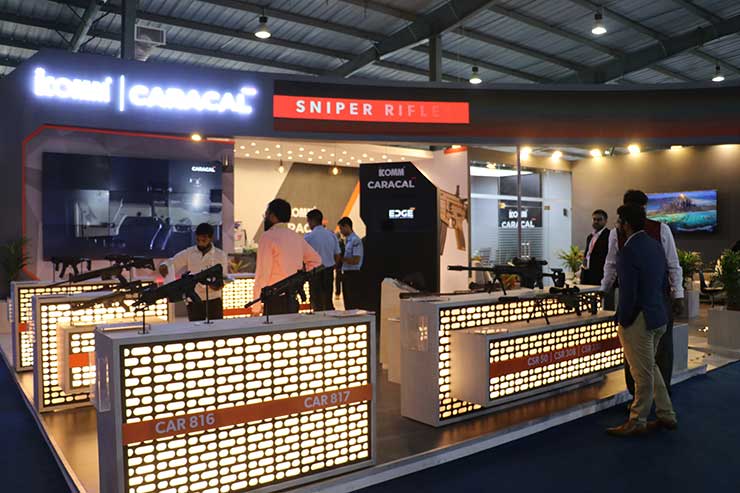
UAE firm Caracal has tied up with an Indian company to produce close-quarter battle (CQB) carbines via the ‘Make in India’ route. Spanish company Navantia also marked its presence at the DefExpo and displayed its wide range of shipbuilding capabilities and technology leadership.
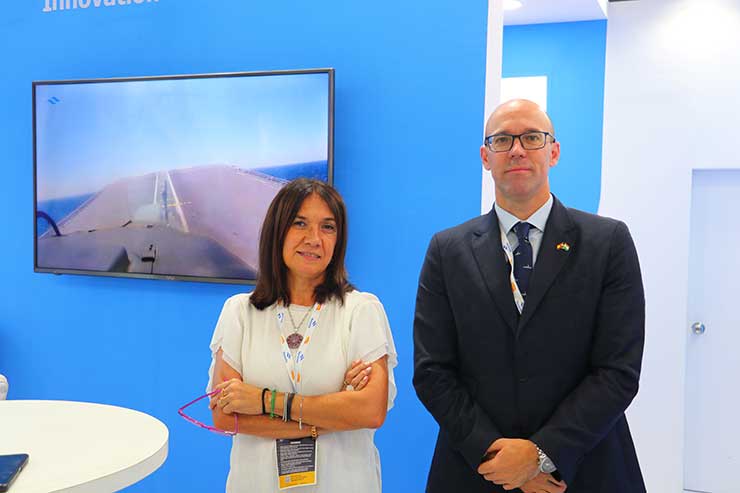
Schiebel Group- another prominent exhibitor at the DefExpo showcased its Camcopter S-100 Unmanned Air System (UAS) which has a proven capability for military and civilian applications. The best part is that the Vertical Take-off and Landing (VTOL) UAS can operate day and night, under adverse weather conditions, with a range of 200 km, both on land and at sea without needing any prepared area or recovery equipment.
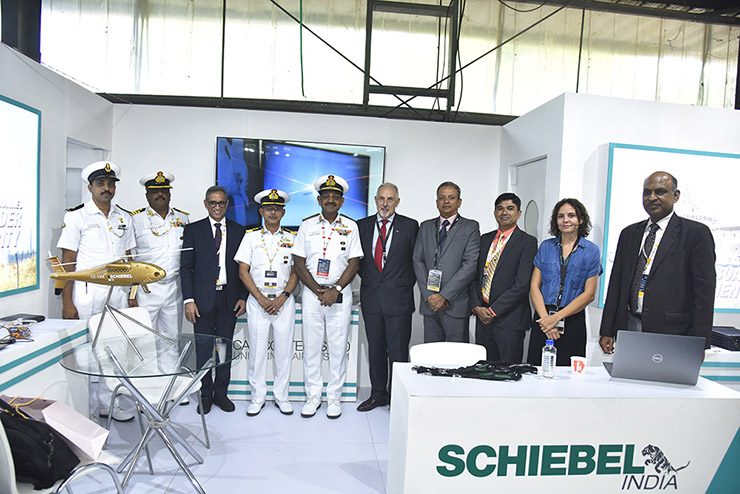
The S-100 navigates automatically via pre-programmed GPS waypoints or can be operated directly with a pilot control unit. The UAV can complete its mission automatically in the most complex of electromagnetic environments using “fly-by-wire” technology controlled by redundant flight computers. Its carbon fibre and titanium fuselage can provide a wide range of payload/endurance combinations. Schiebel Group has big plans under ‘Make in India’ and will open its India office in Hyderabad in coming months.
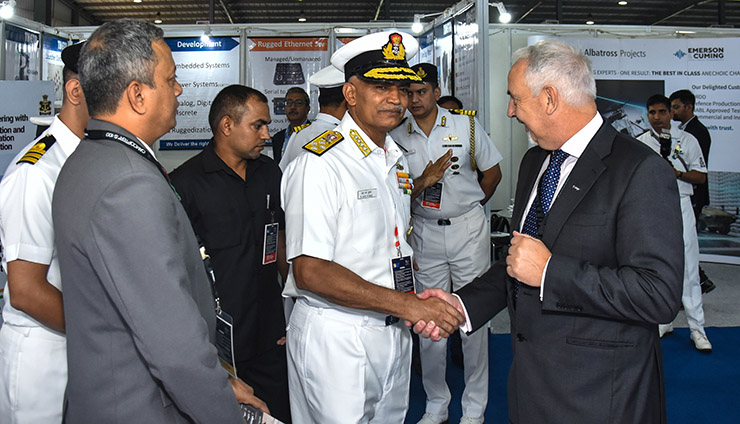
Another exhibitor at the Defence Exposition 2022 was Tata Advanced Systems Limited (TASL), one of India’s fastest-growing aerospace and defence (A&D) manufacturers which has been selected by the Boeing Company as its “Supplier of the Year, 2022” out of 11,000 supplier companies. TASL has been selected by the Ministry of Defence as India’s first private firm to build and deliver an aircraft in flyaway condition to the military — the C-295 tactical airlifter, which is being built in partnership with Airbus Defence and Space.
TASL is also looking to grab a share in the IAF’s tender for 114 multi-role combat aircraft (MRCA) — in collaboration with Lockheed Martin, the original equipment manufacturer (OEM) of the iconic F-16 fighter aircraft. To get things off the ground, TASL and Lockheed Martin will be signing a joint venture (JV) to build the F-21 — an advanced version of the F-16 fighter in India.
TASL’s confidence and ambition to be India’s biggest A&D manufacturer are reflected by the fact that it has set up more than a million square feet of manufacturing facilities in Hyderabad, Nagpur and Bengaluru and signed three JVs with three global defence OEMs — Lockheed Martin, Sikorsky and Boeing within a span of less than a decade.
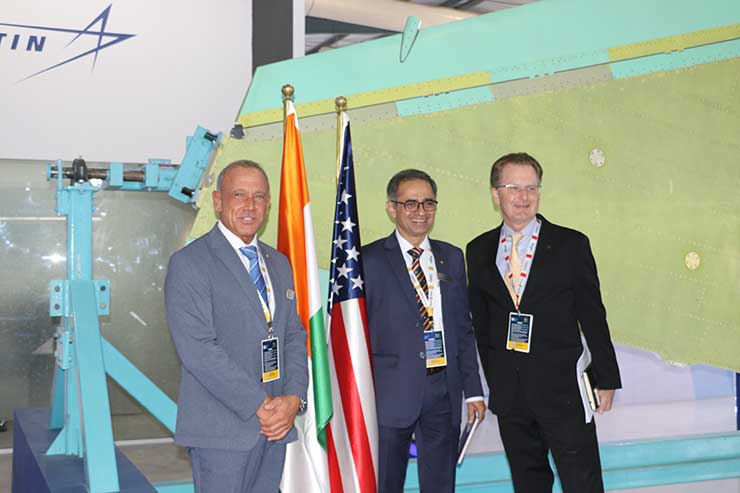
TASL is already a single-source supplier for the world’s top 20 A&D companies, including Boeing, Lockheed Martin, Airbus, Sikorsky, General Electric and Rolls-Royce.
According to reports, the Tata-Airbus JV will manufacture the C-295 transport aircraft for the Indian Air Force in Vadodara, Gujarat which will be inaugurated by none other than Prime Minister Narendra Modi. This is the first time that the C-295 aircraft is going to be manufactured outside Europe.
One of the key highlights of the Defexpo 2022 was Defence Research and Development Organisation (DRDO)’s India Pavilion, showcasing India’s capabilities as a leading potential manufacturer and exporter of Defence equipment.
The prominent show-stoppers at the Defence Research and Development Organisation (DRDO)’s India Pavilion, included a number of artillery guns, armoured vehicles and tanks.
These included the 155 millimetres (mm), 52 calibres (cal) Advanced Towed Artillery Gun System (ATAGS), developed by DRDO in association with the Tata Aerospace and Defence (A&D) and Kalyani- Bharat Forge groups which have also developed their own MGS. The ATAGS – a conventional howitzer mounted onto a wheeled Kolos Tatra tractor, can be fired without any dismounting or lengthy preparation. In fact, it takes just 80 seconds to bring it into action and 85 seconds.
The total weight of the gun and the tractor on which it is mounted is 30 tonnes which allows it to be easily transported on most roads and bridges. The ATGS gun performed accurately with consistent results and successfully cleared tests in deserts and high-altitude areas.
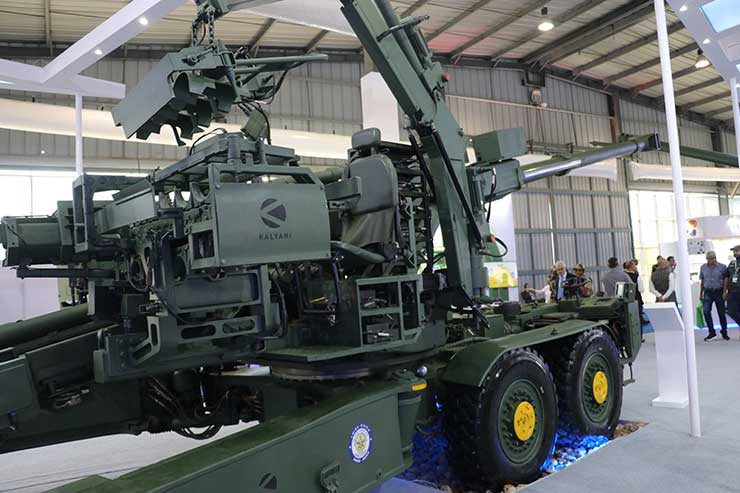
The DRDO is also actively involved in giving shape to project ‘Zorawar’ – named after Zorawar Singh Kahluria — a Sikh general under Maharaja Raja Gulab Singh of Jammu who took his armies deep into Tibet and came to be known as the ‘conquerer of Ladakh’.
The light tank being developed by DRDO based on the specifications spelt out by the Armoured Corps Directorate is expected to be ready for delivery by November 2024 after finishing trials in different terrain –from snow to sand.
It will in all probability have a high-pressure 105 mm or 120 mm tank gun and being lightweight (25-tonne) be able to climb high mountains or go through jungles, narrow roads and bridges. Significantly in the past efforts to convert the Vajra-tracked self-propelled artillery into a light tank had to be shelved because it was heavyweight and couldn’t meet the requirement of the Army.
Likewise, the DRDO is also developing a Wheeled Armoured Platform (WhaP) — family of multi-purpose command post vehicles, an amphibious reconnaissance vehicles for chemical, biological, radiological and nuclear (CBRN) warfare, or light, armoured ambulance.
According to Janes, the WhAP will have cross-country mobility as well as water-obstacle negotiation capability. It can integrate different types of armaments and payloads such as a 30 mm turret — manned and Remote Controlled Weapon Station (RCWS), a 7.62/12.7 mm RCWS, and anti-tank guided missiles.
The exhibit at the India Pavilion of DefExpo that invited attention involved the indigenously-developed long-range detonation system called ‘AgniAstra’ – a multi-target remote-controlled blaster. AgniAstra is aimed to minimise the risk to human soldiers while defusing mines and improvised explosive devices (IEDs) during counter-insurgency operations. The AgniAstra unmanned robotic platform developed by the Army Design Bureau (ADB) will help platoon commanders operating in a hostile environment detect mines and neutralise IEDs using a remote control.
Another much-talked-about exhibitor at the DefExpo 2022, was BEML an Indian Public Sector Undertaking which claims to have achieved 90 per cent indigenisation in defence products. BEML is now exploring opportunities to expand its international footprint and offering a wide variety of Armoured Personnel Carrier, Wheeled Armoured Vehicle, Armoured Recovery Vehicle, Sarvatra Bridging Systems, Heavy Recovery Vehicle, Aircraft Towing Tractors, and Bullet Proof Vehicles for the international markets.
BEML has played a key role by supplying ground support vehicles for the Integrated Guided Missile Development Project. The company has developed a test track to test defence equipment and vehicles at its KGF Complex.
Various delegations from Argentina, Bahrain, and South Sudan visited the BEML stall and held detailed discussions to explore utilising BEML Products for their Defence requirements.
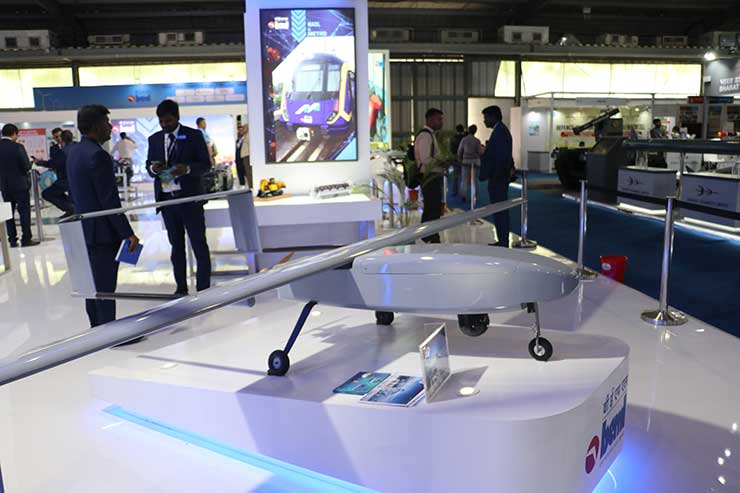
Another star attraction at the DefExpo was Rustom-2 -indigenous medium altitude long endurance (MALE) unmanned aerial vehicle (UAV) designed and developed by the Aeronautical Development Establishment (ADE), Bengaluru which is expected to complete all user trials by August 2023.
Rustom-2 is being developed for surveillance and reconnaissance (ISR) roles as well as carrying different combinations of payload.
Rustom-2 achieved a milestone last year by reaching an altitude of 25,000 feet and an endurance of 10 hours. The target now is to reach an altitude of 30,000 feet with an endurance of 20 hours.
Another product on the anvil of being inducted into the Army is the M4 armoured vehicle being developed by Bharat Forge the Pune-based flagship company of the Kalyani Group.
The M4 is a mine-protected, high-mobility armoured personnel carrier and licensed version of the South African Paramount group’s Mbombe 4. The fully armour-protected M4 weighs around 16,000 Kg and can carry up to 8 people and a maximum payload of 2.3 tonnes.
Another feather in the M4’s cap is that it has a top speed of 140 km/h and a range of 800 km. It can also withstand up to three 10 kg TNT charges under the wheels and one 50 kg IED Blast on its one side.
According to reports the Indian Army had placed orders for emergency procurement of M4 armoured vehicles amidst Indo-China Border Standoff in Eastern Ladakh. The mine-protection vehicle developed by the Kalyani Group has been cleared for export to foreign countries and has been deployed in foreign missions by the Indian government.
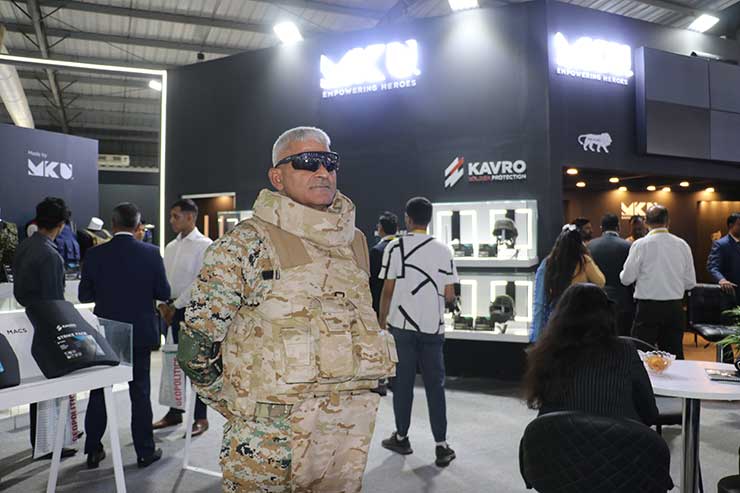
Kanpur-based International Security and Defence Company MKU is the manufacturer of Optronics solutions – night vision binoculars, ballistic helmets, bulletproof vests, ballistic shields & briefcases for military, paramilitary, homeland security, police & Special Forces. MKU’s – night vision and thermal equipment being used in over 100 countries across the globe allow soldiers to operate safely and efficiently in dark and hostile environments.
Optronics solutions are the most critical requirement for modern soldiers in combat situations and could make a huge difference in the final outcome of operations. MKU houses three brands Netro, Kavro and Autro for Defence and Homeland Security.
Netro Optronics comprises a wide spectrum of Advanced Optronic Solutions for Soldiers and Platforms like night vision, thermal, day optic and laser optic technologies. Recently it launched an aviation night vision goggle for aircraft pilots, a high-tech sighting system for grenade launchers and a driver night sight for T-90 tanks. Netro Optronics is supplying night vision devices to the Brazilian Army.
Kavro focuses on soldier protection solutions like body armour, ballistic helmets, shields and armour inserts besides end-to-end armour solutions for land, naval and air vessels. One of its recent innovations was Kavro SCH 111 T or ‘Veer Helmet’ – a special ballistic helmet for Sikh soldiers which has a special shape that allows it to be worn over the turban. The helmet using advanced ‘Reduced Helmet Trauma Technology’ protects the Sikh soldiers from ballistic threats and fragments. It also provides protection to the skull from secondary injuries due to due to high-velocity ballistic impact.
MKU’s cutting-edge fleet control solution called ‘Autro Platform Intelligence’ comprises of multiple smart functionalities and AI-based video telematics for law enforcement and armed forces that can be easily configured as per mission requirements via user-friendly dashboard interfaces.
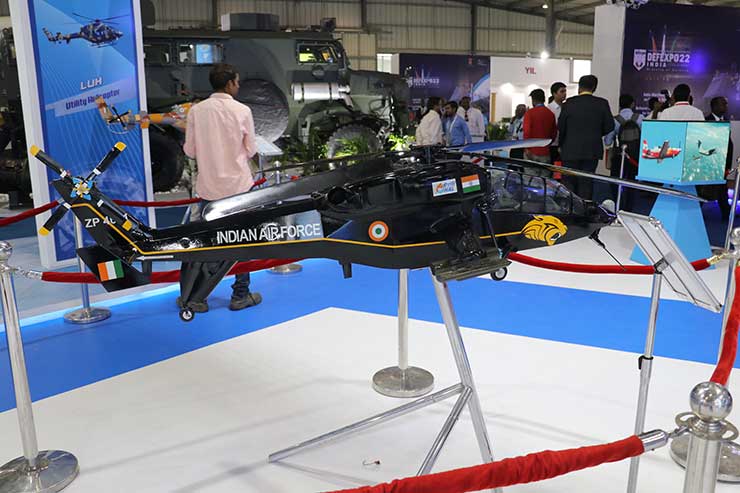
Thanks to a contract signed by the state-run Hindustan Aeronautics (HAL) the Indian Armed forces will soon be seen wearing the indigenous night vision goggles by MKU. Soon pilots flying Light Utility Helicopters (LUH) in different terrains and day/night will get to wear indigenously manufactured Aviation Night Vision Goggles (ANVG) developed at the Uttar Pradesh Defence Industrial Corridor (UPDIC). The Netro NB-3100 ANVG and aiming solutions are designed to help the pilots of helicopters and aircraft to navigate while flying at low altitudes or while taking off in not only threatening conditions but in pitch darkness.
Another MoU inked between Netro and Hensoldt to indigenously manufacture and assemble NightOwl products in the country will enable seamless surveillance of land and maritime borders and observation at extremely long ranges. These – night vision and thermal equipment solutions like monocular goggles, handheld devices, night vision and thermal weapon sights will allow Indian soldiers to operate safely and efficiently in the dark and hostile environment. They will prove to be extremely useful for those using grenade launchers, as well as light and heavy machine guns.
Another exhibitor worth mentioning at the 12th DefExpo was an Ahmedabad-based defence tech start-up called Optimized Electrotech Private Limited – an imaging surveillance technology company focusing on electro-optics, and indigenously designed, developed and manufactured surveillance platforms using artificial intelligence.
Optimized Electrotech, launched ‘NoctVision’ a Day/Night Intelligent Surveillance system that can detect threats in zero light, light fog, and light foliage conditions using thermal and daylight imaging in tandem to produce results that far exceed the capabilities of these individual technologies.
Built-in artificial intelligence ensures that noctvision can be deployed with minimal supervision in strategic areas, and detect vehicles at a distance of 7 km during the day and 6 km at night.
Founded in 2017, Optimized Electrotech specializes in defence surveillance & security platforms. The products offered by the start-up include a wide range of the electromagnetic spectrum and different types of optics for automated threat detection for long-range surveillance under different weather conditions, satellite-based imaging, border surveillance, perimeter surveillance, access control, aircraft tracking, airport security, as well as emergency search and rescue operations.
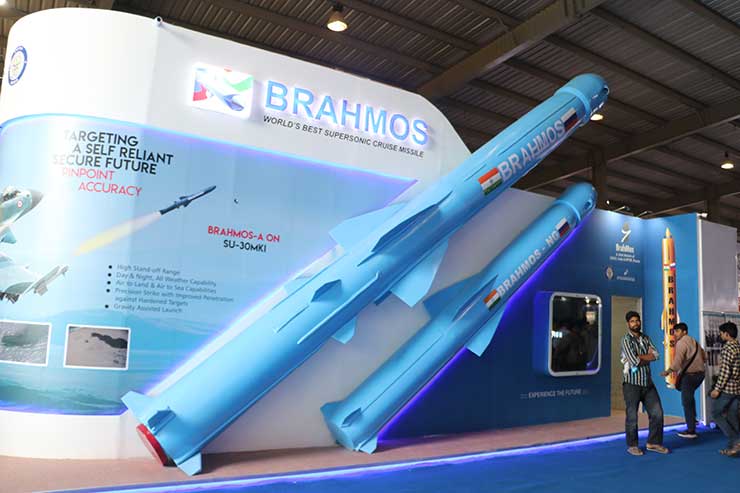
A heartening development is that BRAHMOS and Pinaka defence systems are in heavy demand in many countries of the world and are likely to help India meet the target of $5 billion in defence export by 2025 set by PM Narendra Modi.
Indian firms, BrahMos Aerospace and Solar Group have already started getting orders from the Philippines, Vietnam, Malaysia, and many other countries— which is an indication of the growing strength of the Indian defence industry. Significantly BrahMos bagged a $335 million order from the Philippines earlier this year.
The Indian Army is looking to induct a big number of regiments of Pinaka rockets. Meanwhile, Armenia too has placed orders for Pinaka rockets manufactured by the Solar Group, which is to be completed within two years. Armenia also seems to be interested in buying the indigenously developed Swathi weapon-locating radar.
Nigeria and Indonesia, have expressed interest in the Multi-barrel rocket launcher system developed indigenously by the firm in partnership with the Defence Research and Development Organisation (DRDO).
Likewise, Goa Shipyard Limited has received an order from Sri Lanka for a floating dock and is looking for more orders from friendly neighbouring countries.
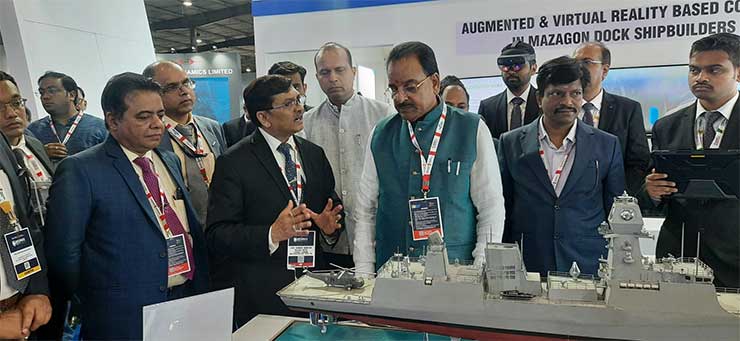
Last but not least India’s premier shipbuilding yard Mazagon Dock Shipbuilders Limited (MDL) signed as many as 24 MoUs with various national and international firms for indigenous development and manufacturing of equipment for ships, submarines and other platforms under ‘Atmanirbhar Bharat’ at the DefExpo 2022.
The MoUs included the design and development of drones, autonomous underwater swarm drones, and other innovative EPC projects in addition to technical collaboration in designing, training, skill building, and AI-based digital inspection process.
Mazagon Dock Shipbuilders Ltd (MDL) has been a thought leader in incorporating digital technologies which have the capability to eliminate unnecessary rework, and improve the delivery timelines and quality of construction of Naval Vessels.
MDL was the first Shipbuilder in India, to use Virtual Reality (VR) for ship design reviews and approvals. This alone has helped reduce timelines for finalizing approvals of design by almost 2-3 years for every project.
-The writer is a seasoned media professional with over three decades of experience in print, electronic, and web media. He is presently Editor of Taazakhabar News








